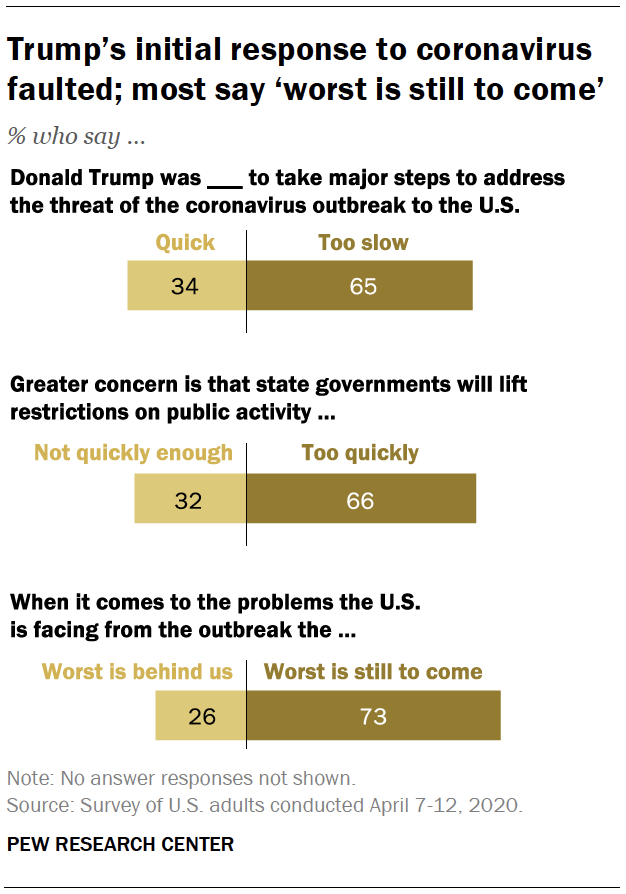The first confirmed case of COVID-19 can be traced back to November 17th, 2019. Patient “zero” was a 55-year-old citizen in the Hubei province. The first confirmed case to appear in the U.S was January 20th, 2020 and it was reported to the CDC two days later. The time difference between these two confirmed cases shows that our government had 2 months to start prepping for what could be the next pandemic, but the United states Government did not start to take precautions until the case was reported to the CDC on January 22nd, 2020. By March 2nd, 2020 there were already 16 confirmed cases and a month later there were 29,717 confirmed cases (Schuchat 2020). The U.S started taking extreme precautions around mid-March .
Many people say that if our government responded to COVID-19 quicker, then we would not have had such a big pandemic and have to quarantine in the U.S. This huge outbreak we experienced has caused lockdowns in many states and even some travel bans. As of December 1st, 2020, you are not supposed to leave a red state or enter one unless you need to for work. Red states when talking about COVID-19 are the states with high amounts of confirmed cases and those people in those states are supposed to avoid all contact with others, maintain social distance, and it is suggested they wear masks. Could a faster response to COVID-19 have reduced the number of cases?
Those who have studied the 1918 influenza pandemic have concluded that wearing a mask in public and staying at least 6 feet apart from one another is one of the best ways to try and control the pandemic until we have a vaccine for it (Hahn, 2020). The 1918 flu emerged in the U.S in the spring according to Crosby and was only affecting people that were in military camps, a base near Boston had one of the biggest outbreaks. These soldiers from the base had brought the flu to Europe but when they came back it attacked more bases in Boston. Eventually it was a huge outbreak and worked its way into Philadelphia in September of 1918. In only 4 months the flu had killed over 12,000 Philadelphians and exceeded a death rate of 719 people for every 100,000 inhabitants (Bakalar, 2007). This occurred because the city allowed large public gatherings, including a citywide parade in support of WWI. The city of St. Louis had a different outcome with this flu, two days after the first civilian cases, police officers helped the department enforce a shutdown of schools, churches and other gathering places (Bakalar 2007). The death rates in St. Louis were half of what Philadelphia’s was, St. Louis had a rate of 347 per 100,000 people, the early action appeared to have saved thousands of lives. The flu had killed over 600,000 people in total.
Based on the data from 1918, researches have concluded that if schools and workplaces were to be shut down and everyone was ordered to stay home, workplace contact rates would fall by 25 percent, but household contact rates would increase drastically by 25 percent (Courtemanche, Garuccio, Le, Pinkston, Yelowitz, 2020). On March 6, the University of Washington was the first major college to cancel in-person classes and exams. By the middle of March more than 1,100 colleges and universities in all 50 states had cancelled in-person classes or shifted to online-only instructions (Smalley, 2020). Because of the university shutdowns cases on campus have obviously declined, the data from 1918discuessed above suggests that quick action was necessary; March was too late so many of the steps we have taken had a lesser effect than if they had happened earlier. Although research into 1918 suggests our measure were adopted too late, most Americans today fear they will now also be lifted too early.
This image shows results of a survey when the PEW Research Center asked random adults from the U.S. 66 percent of Americans say that they fear that the state governments will lift restrictions on public activity too quickly while 32 percent say it will not happen quick enough.
In conclusion, we did not respond quick enough to COVID-19. If we had responded to COVID-19 the same way St. Louis responded to the 1918 flu our shutdowns and quarantines would not have lasted this long. Our government should have started to warn us and take precautions as soon as the confirmed cases in Wuhan China started to rise at a rapid pace.
Works Cited
“1918 Pandemic (H1N1 Virus).” Centers for Disease Control and Prevention, Centers for Disease Control and Prevention, 20 Mar. 2019, www.cdc.gov/flu/pandemic-resources/1918-pandemic-h1n1.html
Courtemanche, Charles, et al. “Strong Social Distancing Measures In The United States Reduced The COVID-19 Growth Rate: Health Affairs Journal.” Health Affairs, 14 May 2020, www.healthaffairs.org/doi/10.1377/hlthaff.2020.00608
Hahn, Stephen. “Oversight of the Administration’s Response to the COVID-19 Pandemic.” U.S. Food and Drug Administration, 23 June 2020, www.fda.gov/news-events/congressional-testimony/oversight-trump-administrations-response-covid-19-pandemic-06232020
“Influenza 1918.” PBS, Public Broadcasting Service, www.pbs.org/wgbh/americanexperience/films/influenza/
“Most Americans Say Trump Was Too Slow in Initial Response to Coronavirus Threat.” Pew Research Center – U.S. Politics & Policy, Pew Research Center, 31 May 2020, www.pewresearch.org/politics/2020/04/16/most-americans-say-trump-was-too-slow-in-initial-response-to-coronavirus-threat/
“Public Health Response to the Initiation and Spread of Pandemic COVID-19 in the United States, February 24–April 21, 2020.” Centers for Disease Control and Prevention, Centers for Disease Control and Prevention, 7 May 2020, www.cdc.gov/mmwr/volumes/69/wr/mm6918e2.htm
“Rapid Response Was Crucial to Containing the 1918 Flu Pandemic.” National Institutes of Health, U.S. Department of Health and Human Services, 28 Sept. 2015, www.nih.gov/news-events/news-releases/rapid-response-was-crucial-containing-1918-flu-pandemic
Smalley, Andrew. Higher Education Responses to Coronavirus (COVID-19), www.ncsl.org/research/education/higher-education-responses-to-coronavirus-covid-19.aspx

